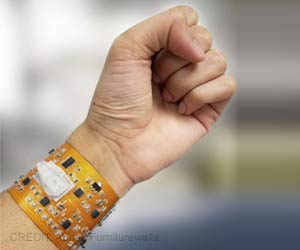Researchers investigated the hygienic state of various types of wristbands to find their risk for hosting potentially harmful pathogenic bacteria.

Wristwatch use and hospital-acquired infection
Go to source). Now, a new study published in the journal Advances in Infectious Diseases gave a stunning revelation about a commonly used item, wristbands. This might convince you not to let your guard down just yet.
‘Rubber and plastic wristbands possess alarming levels of harmful bacteria, while metal bands had little to no bacteria.#BacterialInfections #Hygiene #Disinfection’





Researchers from Florida Atlantic University’s Charles E. Schmidt College of Science tested wristbands of various textures to determine their risk for harboring potentially harmful pathogenic bacteria. Despite being worn daily, routine cleaning of wristbands is generally overlooked or simply ignored.For the study, they tested plastic, rubber, cloth, leather, and metal (gold and silver) wristbands to see if there is a correlation between wristband material and the prevalence of bacteria. They investigated the hygienic state of these various types of wristbands worn by active individuals and identified the best protocols to properly disinfect them (2✔ ✔Trusted Source
Staphylococcus aureus Infections: Epidemiology, Pathophysiology, Clinical Manifestations, and Management
Go to source).
Using standard microbiological assays, researchers looked at bacterial counts, types of bacteria, and their distribution on the wristband surfaces. They also conducted a bacteria susceptibility assay study screening the effectiveness of three different disinfectant solutions: Lysol™ Disinfectant Spray; 70 percent ethanol, commonly used in hospitals and alcohol wipes; and a more natural solution, apple cider vinegar.
Here's Why You Should Toss Common Wristbands
The results suggest that nearly all wristbands (95 percent) were contaminated. However, rubber and plastic wristbands had higher bacterial counts, while metal ones, especially gold, and silver, had little to no bacteria.Plastic and rubber wristbands may provide a more appropriate environment for bacterial growth as porous and static surfaces tend to attract and be colonized by bacteria.
The most important predictor of wristband bacteria load was the texture of wristband material and activity (hygiene) of the subject at sampling time. There were no significant differences between males and females in the occurrence or distribution of the bacteria groups.
Advertisement
The gym-goer showed the highest staphylococcal counts, which emphasizes the necessity of sanitizing wristbands after engaging in rigorous activity at the gym or home.
Considerations for the Selection and Use of Disinfectants Against SARS-CoV-2 in a Health Care Setting
Go to source).
Even at relatively low numbers, these pathogens are of public health significance. Importantly, the ability of many of these bacteria to significantly affect the health of immunocompromised hosts indicates a special need for healthcare workers and others in hospital environments to regularly sanitize these surfaces.
Findings from the study showed that Lysol™ Disinfectant Spray and 70 percent ethanol were highly effective regardless of the wristband material with a 99.99 percent kill rate within 30 seconds. Apple cider vinegar was not as potent and required a full two-minute exposure to reduce bacterial counts.
While these common household disinfectants all proved at least somewhat effective on all materials (rubber, plastic, cloth, and metal), antibacterial efficacy was significantly increased at two minutes compared to thirty seconds.
Different disinfectants, depending on their active ingredients, kill bacteria in different ways, such as by disrupting cell membrane integrity, altering, or removing proteins, or interfering with metabolic activities.
Other potential forms of bacterial transmission and facilitation of infection, such as earbuds or cell phones, should be similarly studied in the future.
References:
- Wristwatch use and hospital-acquired infection - (https://www.journalofhospitalinfection.com/article/S0195-6701(09)00319-3/fulltext)
- Staphylococcus aureus Infections: Epidemiology, Pathophysiology, Clinical Manifestations, and Management - (https://journals.asm.org/doi/10.1128/CMR.00134-14)
- Considerations for the Selection and Use of Disinfectants Against SARS-CoV-2 in a Health Care Setting - (https://academic.oup.com/ofid/article/7/9/ofaa396/5899802)
Source-Eurekalert














